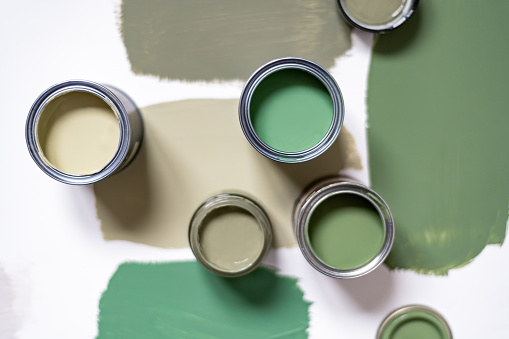How to Buy Limewash Paint

Limewash paint is an environmentally-friendly alternative to traditional house paint. It's derived from natural pigments, lime, and other mineral additives. It's also free of harmful solvents that have pushed traditional house paint to the top of the household environmental hazards list, making it an attractive choice for homeowners who care about the impact their home has on the planet.
It can be used on any porous masonry or concrete surfaces, including plaster and brick. It's also suitable for drywall as long as you use an appropriate primer.
There are many varieties of limewash paint, some of which have added binding agents. They're all similar in that they are made from natural ingredients, but they differ in the types of surface they work on and the number of coats you might need to achieve a full coverage finish.
They all have a low odor and are less likely to cause allergies than conventional paints. They are also a good choice for homes that have children or pets because they don't contain any hazardous solvents.
One of the best things about limewash is that it's easy to manipulate and create unique effects. It's also cheaper than other kinds of house paint, so it's an excellent option for DIYers who are looking for a more economical approach to updating the look of their home. Check out this website at https://www.youtube.com/watch?v=xWw-vAtHNPI for more info about painting.
Before using limewash, test the color you want on a small area of the wall. This will allow you to see how the color will react with the brick and how much of the wash-off effect will be visible.
This is important because the limewash will be visible even after it dries, so you need to make sure you get the right color and a good wash-off effect. It is a great idea to have your local pro painter show you how to do this before you decide to go ahead with it.
Then, mix the limewash for interior walls solution according to the manufacturer's instructions. The limewash should have the consistency of whole milk, but not be thick and gloopy like traditional paints. When it's too thick, it will cling to the surface and won't wash off as easily.
Once it's mixed, apply it to the surface with a brush or sponge. Don't dribble it onto the walls, or it will splatter when dry. It's recommended to use a high-quality, non-woven synthetic paint brush for the job.
It will take a few coats to complete your project. You'll need about 3 coats of limewash on new internal masonry, or 2 to 3 for exterior masonry.
If you're trying to preserve the look of an old building, or if you're looking for a way to add a more modern, rustic feel to your space, you'll love the texture that limewash provides. Plus, it's easier to clean than regular paint, since it isn't as susceptible to mold and mildew.
There are several companies online that sell limewash paint. These include Color Atelier, J.H. Wall Paints, and Portola Paints and Glazes.
